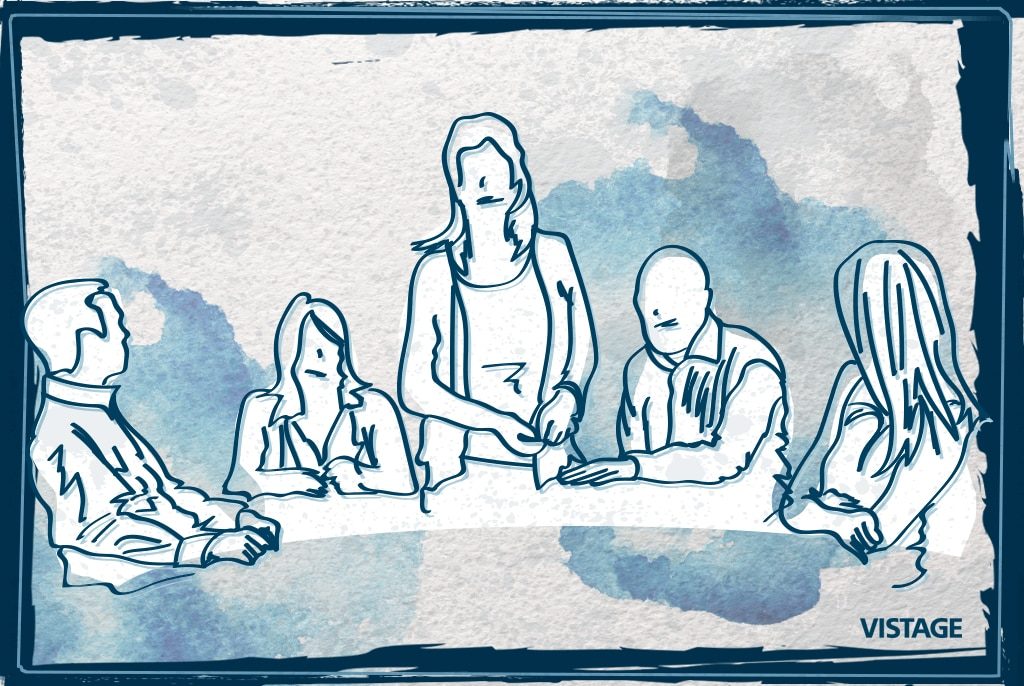From the Battlefield to the Boardroom: 3 Communication Tactics for Your Team

Every day I work with some of the top business owners, CEOs and executives in the Minneapolis-area. They demand the highest of standards. So when designing an executive retreat on leadership, who better to hold us to a higher standard then the U.S. Military? I decided to take my 35 Vistage members and key executives to a three-day leadership development event run by the Thayer Leader Development Group at the U.S. Military Academy, West Point.
 This wasn’t your classic leadership conference, by any means. In typical Army fashion, the first day began at 0700 with boot camp led by drill instructors as we—the “recruits”—knocked out sit-ups and pushups and took off on a half mile run.
This wasn’t your classic leadership conference, by any means. In typical Army fashion, the first day began at 0700 with boot camp led by drill instructors as we—the “recruits”—knocked out sit-ups and pushups and took off on a half mile run.
Thanks to a training that exercised the mind as well as the body, my members and I took away three main tactics that can apply to any company:
1: Play to each recruit’s strengths.
My group learned the value of teamwork while navigating the leader reaction course. Participants split up into several teams and were charged with conquering obstacles that took a combination of problem solving, leadership and physical prowess skills to complete. In one challenge, there was a barrel and a toolkit needed to get over a high wall. The groups quickly learned that each obstacle had to be quickly assessed and a plan created to traverse it. Each team member was assigned a task that was best suited to fit their skill set. For example, someone with extreme upper body strength was assigned to scale a wall first, then toss a rope back for the others to climb up.
“The only way you can do these well is to rely on what people are good at,” said John Bruellman, one of my members and CEO of Sign-Zone. “This very much applies to business. You want your people in the jobs that best utilize their strengths.”
2: Understand the details of a mission before you begin.
We heard a presentation from retired Lt. Gen. Frank Kearney, who oversaw the successful rescue of Private Jessica Lynch, when she was plucked from an Iraqi hospital and whisked to safety during a daring night raid by U.S. Special Forces.
The mission took massive coordination across several military units and perfect communications. The lesson for companies: Be clear on your objectives. Army leaders ensure everyone on the team understands the mission—even committing it to memory. The Army’s formula is a simple and clear three-step process:
- Communicate to everyone the details of the mission
- Ask for a “brief back” from all individuals. Team members repeat their role in the mission.
- Execute
“This lesson was profound for me because we have a lot of different departments at my company,” observed member Jaime Nolan, founder and CEO of IntrinXec Management, Inc., an association management company. “Our departments don’t communicate well,” she added. But now, after applying lessons from West Point, “We think through every single step before we execute. It’s been very impactful and the management team has noticed what a difference it’s made in our communication and successful execution while eliminating surprises,” she explained.
3: Know what you stand for
John also told me about a revelation that was reinforced by retired Brig. Gen. Maureen LeBoeuf, the former head of the physical education department at West Point: It’s important to create your leadership philosophy (including values) and commit it to paper. I’ve worked with hundreds of business owners, and know of few companies that actually do this.
“This process forced us down the path of thinking about our own internal values. Does our leadership philosophy align with values of your organization,” John said. Members on John’s management team are each taking the time to write their own leadership philosophies as well. The leadership philosophies and values give John somewhat of a checklist to share with new employees when they join the organization.
As I reflect upon this leadership retreat, I believe it created great value for me and for the group on three levels.
- At the individual level, all members had valuable take-a-ways about how they need to model leadership in their organizations and how they set the culture. They also received direct feedback on their leadership style under “battle conditions” on the Leader Reaction Course.
- At a company level, members who brought their key executives learned many lessons about how their own leadership teams work together, and what they specifically have to do to operate as high performance teams and model the culture that they are trying to install in their companies.
- Finally, as a Vistage Group, we were able to get out of our comfort zone in a once in a lifetime experience, bond together through our common experiences and create some very vivid and fun group memories. That kind of “foxhole” bonding and feedback significantly deepened the trust and caring in the group. Members are even more committed to one another’s success, and making sure that they tell one another what they need to hear, not just what they want to hear.
Category: Communication & Alignment Leadership
Tags: Vistage International

